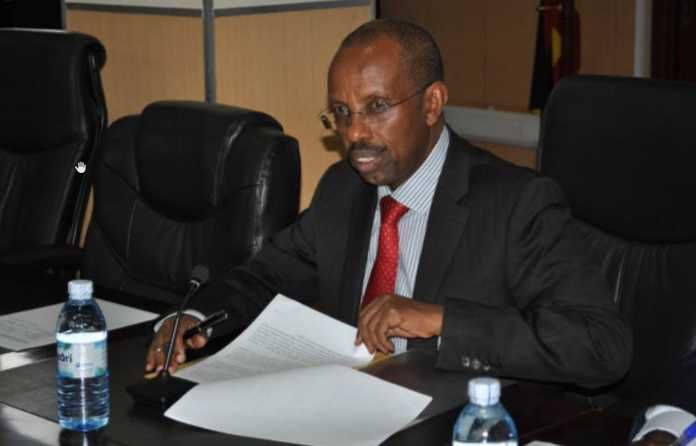This afternoon, the Permanent Secretary and Secretary to the Treasury, Ministry of Finance, Planning and Economic Development, commissioned the Project Management Team that will oversee the delivery of the long awaited procurement system, Electronic Government Procurement system (eGP).
The cross functional teams include representatives from the Ministry of Finance, Planning & Economic Planning, National Information Technology Authority and Public Procurement & Disposal of Public Assets Authority.
In his opening remarks, Mr Keith Muhakanizi (image above) shared that, ‘Reforms in public procurement especially with eGP is one of the reforms being undertaken by Government of Uganda. ICT will enhance the procurement process and we forecast savings. GOU seeks to streamline the procurement process so as to achieve above savings.’
Peter Kahiigi, Director eGovernment Services at the National Information Technology Authority (NITA_U) highlighted that, ‘The Organization for Economic Cooperation and Development (OECD) estimates savings from implementation to be in the range of 5-8 % of the procurement value. Uganda spends approximately 65% (about UGX 7.754 trillion) of the government budget through procurement. This implies that with e-procurement implementation, savings in the range of UGX 387 – 620 billion would be made per year.’
The expected benefits of the new system will include:
Value for Money
✓ E-procurement allows for increased discounts, because larger markets are made accessible.
✓ Further Savings arise from:
o Savings made due to reduced cost of procurement stemming from more efficient internal administrative processes
o Reduced transactional costs on bidders which translate into lower prices quoted.
Efficiency Gains: Efficiencies will be for both government and the private sector.
o Reduction of the procurement cycle time due to the automation of certain phases.
o Since the manual processes are eliminated, there is easy access to the market and tender opportunities, easier biding processes etc.
o Timely payments to suppliers using electronic payment of invoices. This leads to better control of cash flow and efficient contract management which can lead to lower price quotations.
o Standardization – since e-procurement is majorly template-driven, it makes all transactions standardized and traceable. In addition, there are reduced errors in process and documentation for buyers.
o Dematerialization – reduction in archival and storage costs, paper consumption due to use of email and reduced need to use hard copies thus providing environmental and financial benefits.
Accountability
o E-Procurement strengthens Accountability by enhancing transparency and improves access to management and audit information from a central source.
o Tender documentation and outcomes of the procedures (winning suppliers, rankings, and final offers) are automatically posted online and available to all.
Transparency
o Where technical/qualitative evaluation is done using a tabular format where the technical parameters are accurately defined and a score is given to every possible alternative suppliers can clearly understand in advance how they will be evaluated, this leads to an increased strategic accuracy of the offers.
o Performance Measurement: E-Procurement also provides more significant and timely procurement information that creates the potential for regular analysis and reporting for many stakeholders on different aspects.
o The low cost efficient access to accurate, timely and comprehensive management information in e-procurement provides intelligence on spending patterns, inventory, performance and compliance enables strengthening of control, oversight, efficiency and planning capabilities as well as competition.
Governance
o E-procurement can improve public governance, as it lets geographically remote PDEs actively cooperate, for example in the realization of a bundled tendering procedure, such as framework agreements.
o It is also easier to share best practices, due to the availability of information and documents online.
o The data collected in e-procurement systems will assist with mandatory reporting obligations, audit and accountability requirements, as well as internal reporting to assist with on-going development of its procurement strategy.
Compliance
o Uniform procurement platform providing guidance to PDEs and bidding community ensuring all necessary information required for the procurement process is availed and verifiable.
The Government of Uganda is confident that the use of ICT as an enabler of efficiency across the different ministries, agencies and departments will go a long way in making government services more accessible to the citizens of Uganda.

